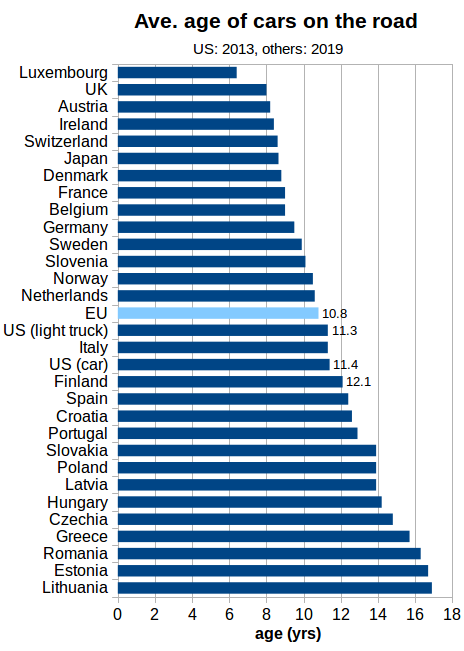
Omicron not looking so "mild" in Japan.
L -> R
Alpha, Delta & Omicron waves
2 lines overlapping for Alpha = ~2% CFR
Same for Delta & Omicron = ~0.3% CFR
Note the differences in Y-axes.
Most seniors got vaccinated after the peak of Alpha wave. Others during the Delta wave.
1/
L -> R
Alpha, Delta & Omicron waves
2 lines overlapping for Alpha = ~2% CFR
Same for Delta & Omicron = ~0.3% CFR
Note the differences in Y-axes.
Most seniors got vaccinated after the peak of Alpha wave. Others during the Delta wave.
1/

Omicron wave is likely to peak next wk (likely already did in southern/western 1/3 of the country), so deaths likely to peak in late Feb. Looking like it'll be the deadliest wave so far.
2/
2/

Roughly,
Spring '20: 1k
Summer/Autumn '20: 1k
Winter '20-'21: 7.5k
Spring '21 (Alpha): 7.5k
Summer '21 (Delta): 3k
Winter '22 (Omicron): ~800 so far.
Per case severity is clearly lower relative to pre-vaxx peaks, but high transmissibility makes that less relevant.
3/
Spring '20: 1k
Summer/Autumn '20: 1k
Winter '20-'21: 7.5k
Spring '21 (Alpha): 7.5k
Summer '21 (Delta): 3k
Winter '22 (Omicron): ~800 so far.
Per case severity is clearly lower relative to pre-vaxx peaks, but high transmissibility makes that less relevant.
3/
If this wave kills 10k, deaths per mil will reach ~230. Not great, but not horrible either. They'll be boosting a lot in Feb/Mar & 5-11 will get theirs in Mar, so that should help some. ~75% of 12-19 have been 2x vaxxed.
4/
4/

Their initial plan to boost 8 mo post-2nd turned out to be a bit too ambitious. They tried to shorten the interval by ~1 mo, but couldn't quite get it done. Maybe a couple of wks earlier than the initial plan at best.
5/
5/

Many reasons for this, but some were legal (Moderna boosters didn't get approved until mid-Dec).
Some were logistics (They had limited Pfizer doses & failed to distribute Moderna boosters, which they had more of, quickly).
6/
Some were logistics (They had limited Pfizer doses & failed to distribute Moderna boosters, which they had more of, quickly).
6/
Others were political. The prev. vaxx minister was a popular politician who knew how to get things done. The current one is just an useless figure head, as the current admin took the power/control over vaccination back to PM's office & MHLW.
7/
7/
JPN doing so well in Oct~Dec probably made ppl, incl. politicians & bureaucrats, a bit too complacent. Unlike S.Korea (or parts of Europe) which had a late Delta wave or US/UK w/ Delta plateau, there was no pressing need to boost early. Things were looking good back then.
8/
8/

Still others were luck. Because Pfizer was approved much earlier than Moderna, most HCWs & seniors got Pfizer for 1st/2nd, & many seem to be hesitant to go w/ heterologous booster. Moderna having had production/delivery issues, etc. last yr sure didn't help.
9/
9/
So many reasons they haven't gotten boosting up quickly & the current PM will be blamed for some of it, incl. for poor communication.
In any case, they seem to be finally getting their acts together on boosting, so hopefully they can keep it going.🤞
/fin
In any case, they seem to be finally getting their acts together on boosting, so hopefully they can keep it going.🤞
/fin

p.s.
For a look at how things are at prefecture/region level (which most won't see discussed in Eng), here's one from yesterday.
For a look at how things are at prefecture/region level (which most won't see discussed in Eng), here's one from yesterday.
https://twitter.com/KawasakiKR11/status/1490077795241938947
• • •
Missing some Tweet in this thread? You can try to
force a refresh















